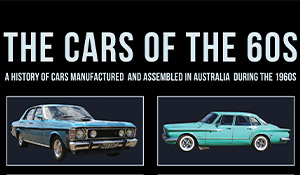TVR is Back!
After more than a decade in limbo, British sports car brand TVR is back in business, with an all-new Griffith making its global debut at the Goodwood Revival this past September.
Speaking at the unveiling, TVR chairman Les Edgar said: “(This) is the culmination of nearly three years of tireless work by the team, and we’re all proud to be able to show the new TVR Griffith to the world.”
Edgar is one of more than a dozen investors who acquired rights to the TVR name in 2013, following a disastrous period under Nikolai Smolensky’s ownership that saw production grid to a halt in 2006.
With key partners in the form of Gordon Murray Design and Cosworth supporting the reborn company, the brand’s owners say the new car stays true to the heritage of the TVR brand founded by Trevor Wilkinson in 1947 and while the new Griffith is a standalone model at the moment, the product range will expand in the future.
“This is unmistakably a TVR, a British muscle car that’s as awesome and brutal as it is charismatic and refined,” Edgar added. “Importantly, the new TVR offers levels of technical sophistication, comfort, reliability and practicality never seen by the brand before.”
Griffith MkIII
The Griffith presented at Goodwood is the third TVR to bear the name. The first came in 1963, taking its name from TVR’s US distributor Jack Griffith, who had the idea of combining the Blackpool-built sports car with a 4.7-litre Ford V8 engine; in a similar vein to what Carroll Shelby did with the AC Ace, creating the Cobra.
The second Griffith arrived in 1991 during Peter Wheeler’s ownership of TVR and again featured a V8 engine, but this time a 4.0-litre V8 sourced from Rover. TVR developed this engine in-house to produce a 5.0-litre, 254kW version – the AJP8 - that would be used in the Griffith until its production ended in 2002.
This latest Griffith sticks to the tradition of rear-wheel drive V8 power, using the same 5.0-litre naturally-aspirated unit as the current Mustang GT.
Modified by Cosworth to produce a claimed 373kW, top speed from the tuned V8 is listed at more than 320km/h, with a 0-100km/h time of under four seconds. A six-speed manual will be the only transmission available, but unlike its predecessors, which were roadsters, the new Griffith is a fixed-roof coupe.
Murray Factor
On top of a carbon fibre chassis, the new Griffith’s exterior styling is the work of Gordon Murray and is said to be driven as much by aerodynamic efficiency as it is by attractive design, with air intakes and other elements all designed to improve cooling and increase downforce.
Murray is also responsible for the ‘iStream’ assembly process that will be used to build the new TVR. Alleged to make manufacture simpler and more efficient, iStream also claims to greatly reduce required floorspace (by up to 80 per cent), allows for easier production of different variants, and is ‘greener’ with reduced CO2 emissions.
In the case of the Griffith, iStream consists of bonding carbon fibre inner panels to a steel frame, with a totally flat, ground-effect floor improving aero efficiency. Exterior panels are also made from carbon fibre, with aluminium used for other structural components to achieve the claimed power-to-weight ratio of 400bhp/tonne, which is comparable to a McLaren 570S.
Styling bears no specific resemblance to previous generations of the Griffith, and is more restrained compared to the likes of the Sagaris and Cerbera from TVR’s more recent history. Distinguishing features include large front-end air ducts and a similarly oversized rear diffuser, as well as side-exit exhausts, compact rear spoiler and a ‘double bubble’ roofline.
The new Griffith’s 4314mm length, 1850mm width and 1239mm height make it smaller overall than a Porsche 911, which some see as the new TVR’s closest competitor, but it’s arguably more evenly matched against a Porsche Boxster, or even a Chevy Corvette.
Interior styling, also the work of Gordon Murray, seemed less “finished” than the exterior on the unit presented at Goodwood, but TVR says the aim is to create a more “analogue” cabin, with minimal switchgear and electronic gadgetry to distract from the driving experience.
Digital instrumentation is used and there is a central infotainment screen, but it’s tiny by modern standards, with the stubby gear lever being the standout feature in the centre console. The steering wheel is similarly free of extra functions, but a cluster of raised buttons flank the instrument panel.
Worth the Wait
The factory where the new Griffith will be built is still under construction, part of the aborted Ebbw Vale circuit in Wales. As such, production isn’t due to commence until late-2018, but enthusiasts are prepared to wait, some placing deposits more than two years ago.
The first new TVR Griffiths will be offered in ‘Launch Edition’ configuration, which includes exclusive paint options, custom alloy wheels, a full-leather interior and bespoke infotainment system. Limited to 500 units, the Launch Edition’s starting price is listed at £90,000 (around AU$125,000 direct exchange), with the regular Griffith presumably being marginally cheaper. Australian delivery of the new TVR Griffith is likely, but has yet to be confirmed, as TVR say their initial focus will be on UK and European markets.















![2015 holden commodore vf sv6 storm 3.6i [my15] 6 sp sports automatic sedan](https://cdn.justauto.com.au/ad-assets%2F21712--4489%2Ffield_images%2F21712_4489_1.jpg)








